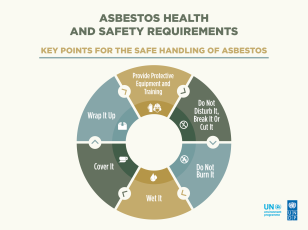Handling Asbestos after the Beirut blast
Handling Asbestos after the Beirut blast
March 5, 2021
On August 4, 2020, Beirut was rocked by the most devastating blast in the city’s history, killing more than 200, injuring more than 10,000 and displacing more than 300,000 people. In addition to the human casualties, it is estimated that 9,700 building were damaged or destroyed, of which more than 70,000 apartments over an area spanning more than 10 km around the port of Beirut1. In addition, the following infrastructure incurred massive damages: 3 private and 1 public hospital, 23 Primary Health Care centres, the Ministry of Public Health’s National Central Drugs Warehouse (CDW), 34 schools, around 40,000 residential and commercial buildings, along with 70 cultural heritage buildings.
The massive explosion in the Beirut Port took place amidst a complicated socio-economic context, at a time when the country was already su_ering from a compounded crisis including economic fallout, chronic fiscal deficit, environmental deterioration, security risks, in addition to socio-economic challenges that have accumulated over decades of weak governance and increased corruption. Against these macro-economic developments, the magnitude and severity of poverty are expected to intensify, with even more deterioration in purchasing power, loss of jobs, and reduced income.
UNDP is working with partners, including UNEP, EU and WB to design environmentally-sound management plans for the construction and debris waste that was generated from the explosion, particularly focusing on outside the Port, in the most heavily damaged areas of Beirut. In addition, UNDP is designing awareness raising material to protect the health and safety of people and waste handlers. All the plans should eventually integrate into the national solid waste management plans in Lebanon.

 Locations
Locations